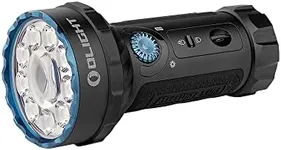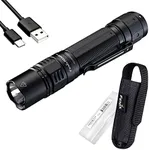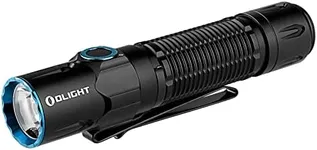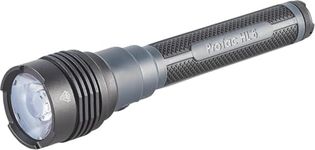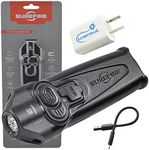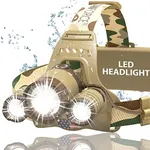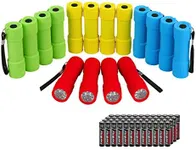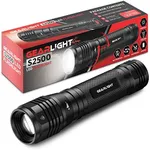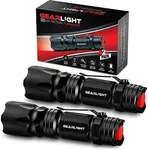Buying Guide for the Best Marine Flashlights
Choosing the right marine flashlight is crucial for safety and convenience when you're out on the water. Whether you're navigating at night, signaling for help, or simply need a reliable light source, a good marine flashlight can make all the difference. Here are some key specifications to consider when selecting a marine flashlight, along with explanations to help you understand their importance and how to choose the best one for your needs.Waterproof RatingThe waterproof rating indicates how well the flashlight can withstand water exposure. This is crucial for marine environments where the flashlight will likely get wet. Ratings are usually given in IPX standards, where IPX4 means splash-resistant, IPX7 means it can be submerged up to 1 meter for 30 minutes, and IPX8 means it can be submerged deeper and for longer periods. For marine use, aim for at least IPX7 to ensure reliability in wet conditions.
LumensLumens measure the brightness of the flashlight. This is important for visibility in dark or foggy conditions. Flashlights with lower lumens (100-300) are suitable for close-up tasks, while those with higher lumens (300-1000+) are better for long-distance visibility and signaling. Choose a flashlight with higher lumens if you need to see far distances or signal for help, and lower lumens for general onboard tasks.
Beam DistanceBeam distance indicates how far the light can reach. This is important for navigation and spotting objects at a distance. Short beam distances (up to 100 meters) are good for close-range tasks, while longer beam distances (100-500 meters) are better for navigation and spotting hazards. Consider your typical usage scenarios to determine the appropriate beam distance for your needs.
Battery LifeBattery life determines how long the flashlight can operate before needing a recharge or new batteries. This is critical for extended trips or emergencies. Flashlights with longer battery life (10+ hours) are ideal for prolonged use, while those with shorter battery life (2-10 hours) may be sufficient for shorter outings. Choose a flashlight with a battery life that matches the duration of your typical activities.
DurabilityDurability refers to the flashlight's ability to withstand rough handling, drops, and harsh marine conditions. This is important to ensure the flashlight remains functional in tough environments. Look for flashlights made from robust materials like anodized aluminum or reinforced plastic, and those with shock-resistant features. If you expect to use the flashlight in rugged conditions, prioritize durability.
Size and WeightSize and weight affect the portability and ease of use of the flashlight. This is important for comfort and convenience, especially if you need to carry it for long periods. Smaller, lighter flashlights are easier to handle and store, while larger, heavier ones may offer more features and longer battery life. Consider how you plan to use the flashlight and choose a size and weight that you can comfortably manage.
Mounting OptionsMounting options refer to the ability to attach the flashlight to various surfaces or equipment. This is useful for hands-free operation and ensuring the flashlight is always within reach. Some flashlights come with clips, straps, or magnetic bases. If you need to keep your hands free or want to secure the flashlight in a specific location, look for models with versatile mounting options.
